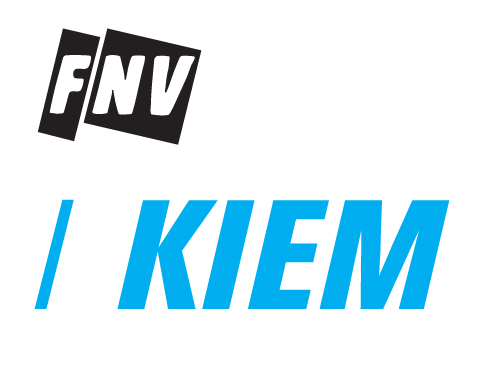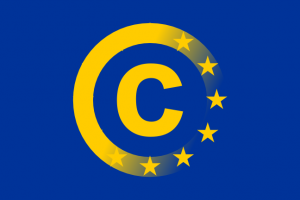Prejudiciële vragen: cao die ziet op de tarieven die musici minimaal moeten ontvangen
Prejudiciële vragen gesteld aan HvJ EU 9 juli 2013, zaak C-413/13 (FNV KIEM tegen De Staat) - dossier
 CAO. Mededingingsrecht. Tarieven die musici moeten ontvangen. Vakbond FNV heeft tezamen met de NL toonkunstenaarsbond (Ntb) voor 2006/2007 met de werkgeversvereniging Vereniging van Stichtingen Remplaçanten Nederlandse Orkesten (VSR) de cao Remplaçanten Nederlandse Orkesten afgesloten. De cao ziet onder meer op de tarieven die musici minimaal moeten ontvangen. Er zijn zelfstandige remplaçanten en remplaçanten die op basis van een arbeidsovereenkomst werken.
CAO. Mededingingsrecht. Tarieven die musici moeten ontvangen. Vakbond FNV heeft tezamen met de NL toonkunstenaarsbond (Ntb) voor 2006/2007 met de werkgeversvereniging Vereniging van Stichtingen Remplaçanten Nederlandse Orkesten (VSR) de cao Remplaçanten Nederlandse Orkesten afgesloten. De cao ziet onder meer op de tarieven die musici minimaal moeten ontvangen. Er zijn zelfstandige remplaçanten en remplaçanten die op basis van een arbeidsovereenkomst werken.
De NMa heeft in een visiedocument aangegeven dat deze werkwijze niet strookt met VWEU artikel 101 respectievelijk artikel 6 van de Mededingingswet (Mw). Daarop hebben de VSR en de Ntb de cao opgezegd en is er met de FNV geen nieuwe cao afgesloten.
FNV is het niet eens met het standpunt van de NMa dat het hier om verboden afspraken zou gaan: ze zijn neergelegd in een cao en bieden bescherming aan remplaçanten tegen onderbieding. Zij vordert een verklaring voor recht dat de regelgeving zich niet verzet tegen de betreffende cao en een bevel aan de Staat tot rectificatie van het door de NMa ingenomen standpunt.
De Rechtbank Den Haag wijst de vorderingen af omdat het HvJEU in eerdere (oude) jurisprudentie heeft bepaald dat er twee voorwaarden aan een cao die een uitzondering wil vormen op het kartelverbod worden gesteld. In deze zaak is echter slechts aan één voorwaarde voldaan. De door FNV opgevoerde bescherming van remplaçanten tegen onderbieding vindt de Rechtbank niet overtuigend zodat de cao-exceptie hier niet van toepassing is.
De enige grief in de beroepsfase stelt in volle omvang de vraag aan de orde of het verbod op de mededinging beperkende afspraken van toepassing is op een bepaling in een cao voor werknemers, waarin is bepaald dat zelfstandigen die voor een werkgever hetzelfde werk verrichten als die werknemers op basis van een overeenkomst van opdracht een bepaald minimumtarief moeten ontvangen. Partijen zijn het erover eens dat deze vraag volgens Europees recht beantwoord moet worden. Het Hof Den Haag legt het HvJ EU de volgende vragen voor:
(1) moeten de mededingingsregels van het Unierecht aldus worden uitgelegd dat een bepaling in een collectieve arbeidsovereenkomst, afgesloten tussen verenigingen van werkgevers en van werknemers, waarin is bepaald dat zelfstandigen, die op basis van een overeenkomst van opdracht voor een werkgever hetzelfde werk verrichten als de werknemers die onder de werking van de cao vallen, een bepaald minimumtarief moeten ontvangen, reeds op grond dat die bepaling voorkomt in een cao, buiten de werkingssfeer van art. 101 VWEU valt;
(2) indien het antwoord op de eerste vraag ontkennend luidt, valt die bepaling dan buiten de werkingssfeer van art. 101 VWEU in het geval deze bepaling (mede) bedoeld is ter verbetering van de arbeidsvoorwaarden van de werknemers die onder de werking van de cao vallen en is het daarbij nog van belang of die arbeidsvoorwaarden daardoor rechtstreeks of slechts indirect worden verbeterd.

 New business models in the digital environment
New business models in the digital environment  Via IViR.nl:The internet has proven a convenient vehicle for the commission of unprecedented levels of copyright infringement by leagues of anonymous – and impecunious – infringers. In their quest for deep pockets and easy targets, right-holders have, in reaction, turned against the internet middlemen, attempting to hold them accountable for the wrong-doings of the small-scale offenders using their networks. As a result, the tricky issue of indirect liability has been given new urgency. With perplexed domestic courts turning to the general rules on extra-contractual liability to parse the issue, during the 90s a number of EU Member States started introducing special liability laws in order to shield the budding internet industry from legal uncertainty. (...)
Via IViR.nl:The internet has proven a convenient vehicle for the commission of unprecedented levels of copyright infringement by leagues of anonymous – and impecunious – infringers. In their quest for deep pockets and easy targets, right-holders have, in reaction, turned against the internet middlemen, attempting to hold them accountable for the wrong-doings of the small-scale offenders using their networks. As a result, the tricky issue of indirect liability has been given new urgency. With perplexed domestic courts turning to the general rules on extra-contractual liability to parse the issue, during the 90s a number of EU Member States started introducing special liability laws in order to shield the budding internet industry from legal uncertainty. (...) Uit de Executive Summary: The exclusive right of “making available” under the WCT and the implementing EU legislation covers the offering to the public of a work for individualized streaming or downloading; in addition, where it takes place, the actual transmission of a work to members of the public also is covered, both irrespective of the technical means used for making available. In essence, what matters is that the act (i) is performed by an individual person (ii) directly or indirectly has the distinct effect of addressing the public, irrespective of the tool used by the individual, and (iii) concerns subject matter protected by copyright or related rights.
Uit de Executive Summary: The exclusive right of “making available” under the WCT and the implementing EU legislation covers the offering to the public of a work for individualized streaming or downloading; in addition, where it takes place, the actual transmission of a work to members of the public also is covered, both irrespective of the technical means used for making available. In essence, what matters is that the act (i) is performed by an individual person (ii) directly or indirectly has the distinct effect of addressing the public, irrespective of the tool used by the individual, and (iii) concerns subject matter protected by copyright or related rights. Verzoek om een prejudiciële beslissing, Cour de cassation.
Verzoek om een prejudiciële beslissing, Cour de cassation. Douane. Beslag. Namaak (‘counterfeiting’) en productpiraterij plegen voor de civiele rechter – en in extreme gevallen ook strafrechtelijk – bestreden te worden. Minder bekend maar zeker niet minder belangrijk is de rol van de douane bij de namaak- en piraterijbestrijding. Op grond van de zogeheten Anti-Piraterij Verordening (Verordening 608/2013 van 12 juni 2013, die in de plaats is gekomen van
Douane. Beslag. Namaak (‘counterfeiting’) en productpiraterij plegen voor de civiele rechter – en in extreme gevallen ook strafrechtelijk – bestreden te worden. Minder bekend maar zeker niet minder belangrijk is de rol van de douane bij de namaak- en piraterijbestrijding. Op grond van de zogeheten Anti-Piraterij Verordening (Verordening 608/2013 van 12 juni 2013, die in de plaats is gekomen van 



















